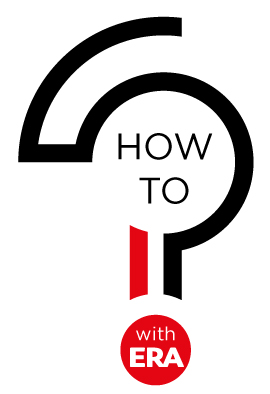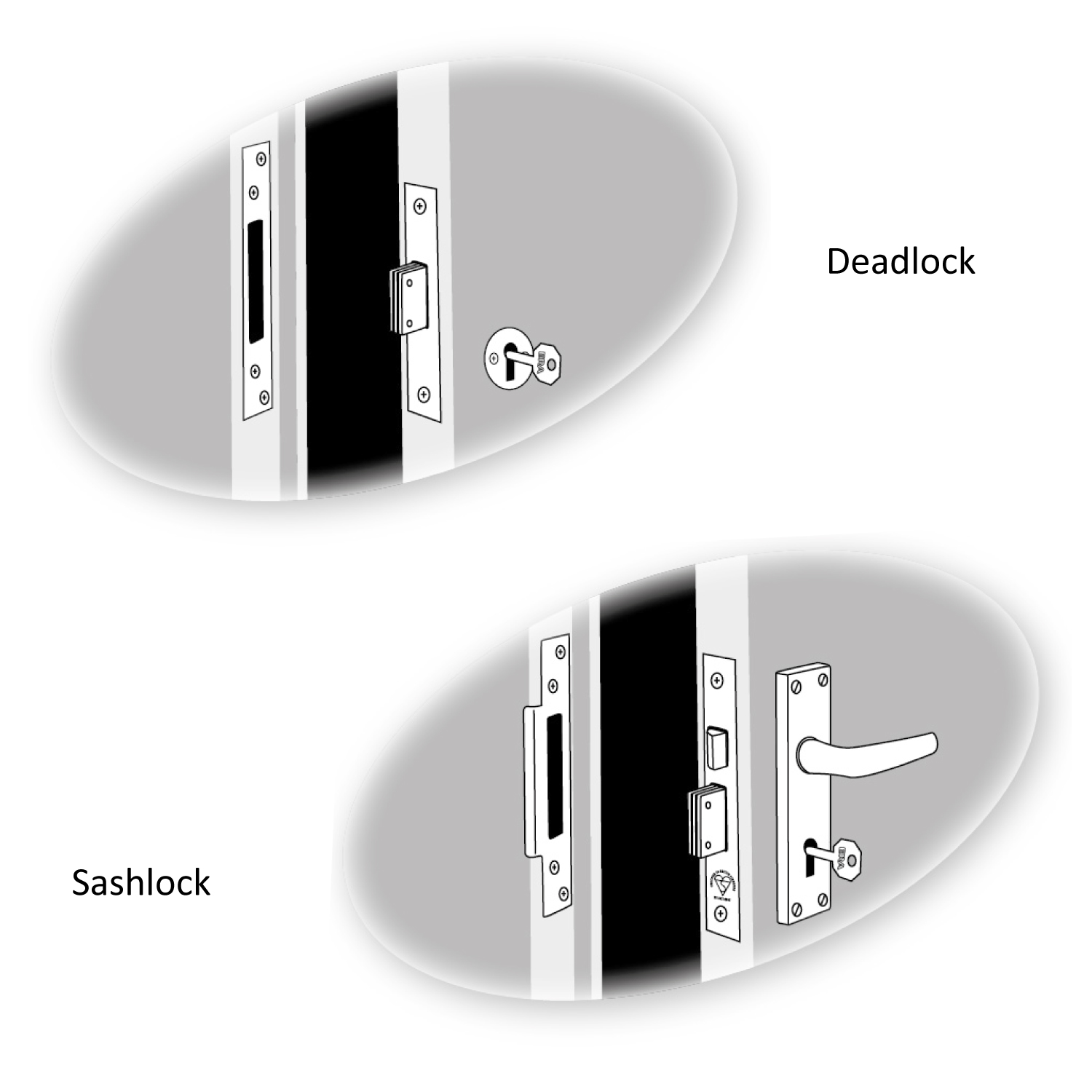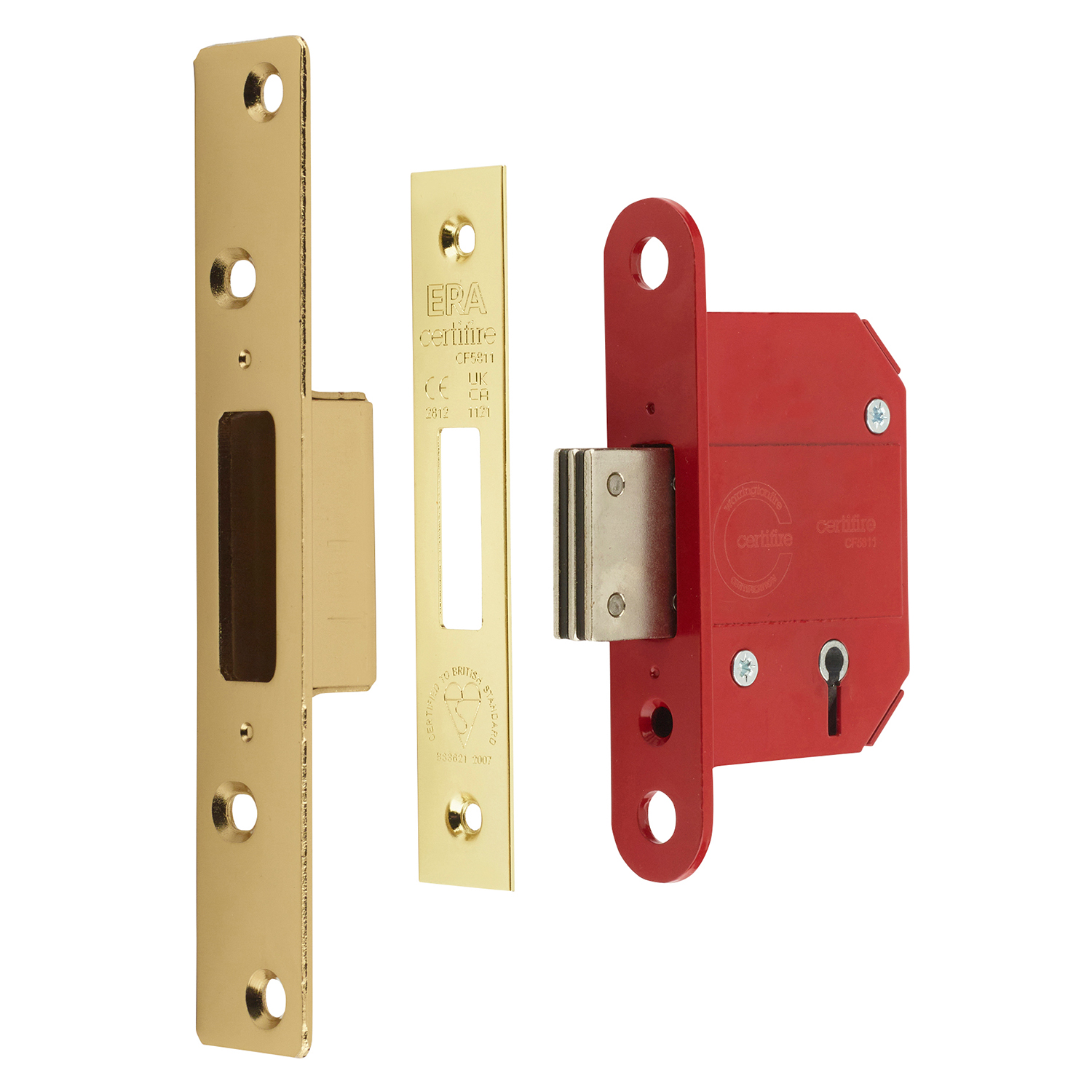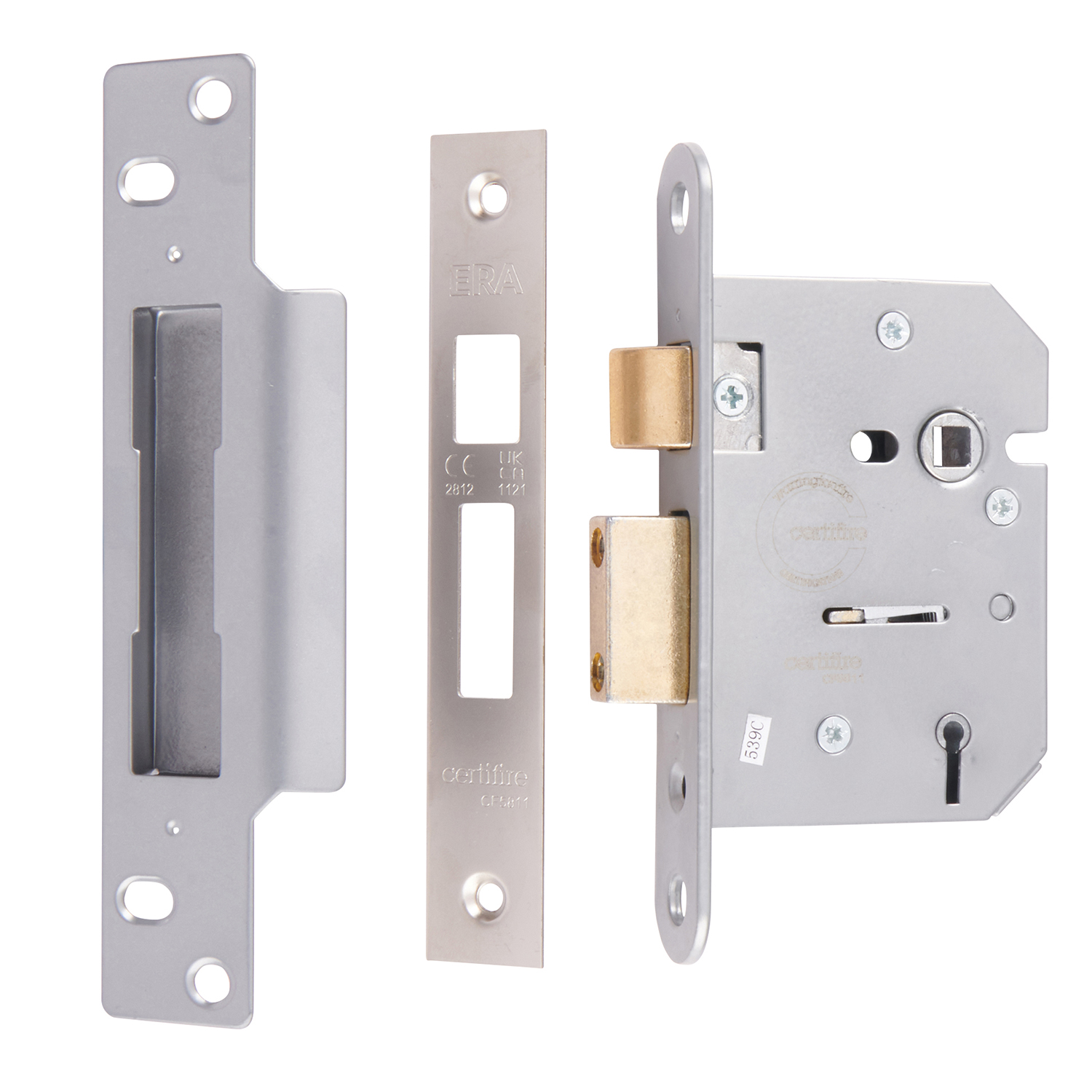How to choose a Mortice Lock

A mortice lock is used in traditional timber doors, in both external and internal doors. Embedded into the door for extra strength, it provides a locking point in the centre of the door.
There are several different options when you are choosing a mortice lock. Available as either a deadlock or sashlock, mortice locks generally use traditional key locking or euro cylinder operation. Here we look at the different options when selecting a mortice lock and tips on how to pick the correct one for the application.
Please note this guide generally covers ERA mortice locks. It’s always advisable to refer to the individual manufacturer's details for specific product information or seek advice if you are unsure. Should you need to fit or measure a mortice lock, we have several other handy how to guides to help.
How to choose the right mortice lock
 Generally, this depends on the application, it’s worth considering where the lock will be fitted – is it an internal door or an external door? As this will likely influence the security level you need. Do you have an existing lock fitted, is this for a replacement or a new installation? In both cases, you need to refer to the individual lock diagram to ensure that the product will fit the door.
Generally, this depends on the application, it’s worth considering where the lock will be fitted – is it an internal door or an external door? As this will likely influence the security level you need. Do you have an existing lock fitted, is this for a replacement or a new installation? In both cases, you need to refer to the individual lock diagram to ensure that the product will fit the door.
It’s important to understand how you want to lock to function – will you have a secondary lock fitted to the door? Do you need constant access or secured access? It’s always wise to look at the BS standard that the lock meets if this is appropriate and the type of operation, so you can be clear about the lock you are fitting.
The following sections will discuss the different types of mortice lock and the relevant BS standards, so you can understand what lock best meets your needs.
Different types of Mortice Lock
Mortice locks are generally available as either a deadlock or sashlock. A deadlock is operated by a key only and is sometimes used alongside a Nighlatch to provide additional locking in the centre of the door. You don’t need to use a handle with a deadlock, turning the key or thumbturn retracts the centre deadbolt.
Whereas a sashlock is fitted with a sprung latch bolt that catches when the door is closed alongside a central deadbolt. Using both a key and a handle. Turning the key retracts the deadbolt and then depressing the handle operates the latch. Sashlocks are ideal for fitting to a door that doesn’t have a separate locking point e.g. Nightlatch.
Traditional key locking and euro cylinder operation
In terms of lock operation, a mortice lock may use either traditional key locking or a cylinder. A mortice that uses traditional key locking is fitted with levers and it’s the combination of these levers that gives the lock its security. Levers are numbered and generally, the higher the number of levers that the lock has, the greater security the lock provides, but it’s worth checking the technical specifications of the individual lock to be certain. So for example, a 5 lever mortice lock provides a much greater level of security than a 2 or 3 lever lock. It’s essential that when fitting a mortice lock to an external door that you use a 5 lever lock for the highest level of protection. For internal doors, the use of 2 or 3 lever locks may be suitable as they generally don’t need the same level of security as an external door. For deadlock mortice locks, a separate escutcheon is generally provided to cover the keyhole once fitted in the door.
Mortice locks that use cylinders are normally supplied as a kit that includes both the lock and a suitable cylinder. Cylinders may be either a euro profile design or oval shape depending on the application. If any technical standards are associated with the lock (see the following section), you must ensure both the lock and the cylinder are fitted together. If the cylinder is swapped for an alternative, the lock and cylinder combination will no longer meet the required specification. A separate escutcheon may be provided to cover the cylinder once on the door.
British Standards for Mortice Locks
Many locks are also subjected to independent testing to provide assurances that they conform to certain technical and security standards. Some of which we will discuss here in more detail. BSI (British Standard Institution) is the business standards company that helps organisations all over the world with testing and training, to ensure products and services that consumers purchase meet certain criteria of excellence.
BS 3621
BS 3621 is a British Standard test and performance specification for thief‑resistant mechanically operated single-point locks. It covers locks that are operated by a key from both the inside and outside of the door. Generally, single-point locks are fitted to traditional timber doors and many insurance companies will specify that as a minimum a BS 3621 five lever mortice lock must be fitted to all external timber doors of a property. The BS 3621 Kitemark is designed to be awarded to those locks that offer protection against drilling, picking, cutting or forcing. Generally recognised as giving the maximum protection to the majority of timber doors fitted to domestic or commercial properties.
BS 8621
The BS 8621 Kitemark has the same protection as BS 3621 but offers a method for keyless egress from the property at all times. Ideal for doors where there is a requirement for an easy action method of opening the external door from the inside with no need for keys or similar devices for unlocking. Especially relevant for entrance doors in multi-residential and other buildings. Generally, these types of mortice locks use a thumbturn cylinder internally to ensure it is possible to make an emergency escape in an event of a fire.
BS 10621
Whereas BS 10621 combines both of the above and covers locks in which the mode of operation can be switched between the normal BS 8621 operating mode and a secure mode in which no egress is possible. These types of locks are seen on buildings where easy access is required through the day but then needs to be fully secured when the building is locked for example at night. Or securing to leave for an extended period e.g. holiday.
Terminology
Sashlock
A lock mechanism incorporating both a latch and deadbolt feature. Sashlocks can be key operated with a lever mechanism or cylinder operated and can incorporate thumbturns for keyless egress applications. Typically used with a lever handle set.
Deadlock
A lock mechanism incorporating a deadbolt only. Deadlocks can be operated with a lever mechanism or cylinder operated and can incorporate thumbturns for keyless egress applications.
Latch
A self-engaging element of the lock that secures the door when engaged with the keep, and can be released by hand. Latches can be deadlocked so that when the lock mechanism is engaged, the latch cannot be withdrawn.
Deadbolt
A bolt that is operated in both directions by a key, handle or thumbturn.
Differ (effective differ)
The difference between locks of similar design, achieved by the levers, allows each lock to be operated by its own key.
Forend (faceplate)
The element of the lock case through which the lock is fixed to the door, and through which the latch and or deadbolt pass. Faceplates may have a square or round end.
Spindle
The square section drive bar, usually 8mm in width that is positioned through the drive of the lock and locates into the handle set levers, or knobs. Operating the lever rotates the spindle, which in turn operates the drive (follower) of the lock. The required length of the spindle is dependent upon the thickness of the intended door and the depth of the receiving element of the handle lever.
Centres
The vertical dimension between the lock spindle and the centre of the keyway of the gearbox. Centres can vary between lock systems, though the ERA range has a standard of 57mm. Understanding the lock centre dimension is critical for the specification of the correct handle.
Rebate
A rectangular recess along the edge of a frame to receive the corresponding door leaf. Rebates are also machined into the meeting rails of double doors to provide closing faces for the corresponding leaves. Rebate conversion kits are required for door locks and keep, fitted into rebated edges of timber doors.
Backsets
A backset is the distance between the lock keyhole and the outer edge of the lock.
Keeps/ Striker
The element of the lock system that is fitted to the fixed portion of the door frame, into which the moving part of the lock (e.g. bolt) engages when in the locked position.
Need further help?
If you have any questions, please contact the ERA Expert team who would be happy to assist. Or for further details ERA has a broad range of mortice lock solutions to suit the majority of applications. For more information visit eraeverywhere.com




